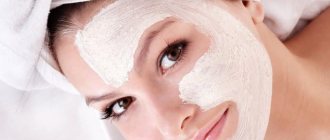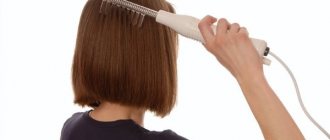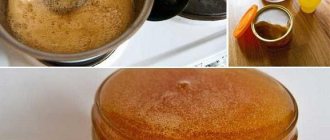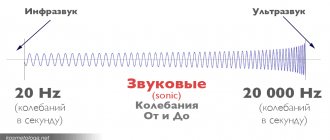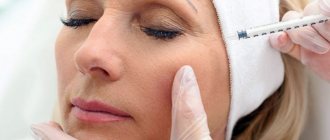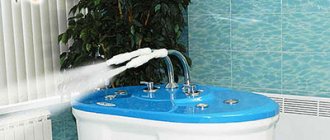Benefits of the procedure
The skin is saturated with nutrients and moisture. The complexion is evened out, fine wrinkles and visual skin defects disappear thanks to the filling effect of fibrin autogel. Collagen production will occur for three months after the procedure, so the effect will become more and more noticeable over time.
Stars such as Madonna and Kylie Minogue have repeatedly resorted to cellular rejuvenation.
The patented Swiss technology RegenLab has received worldwide recognition, and today the cellular rejuvenation procedure is carried out in the Medial plastic surgery and aesthetic medicine clinic, along with the world's best technologies for rejuvenation and preservation of natural beauty.
The best results were obtained in patients with moderate wrinkles in the age category from 40 to 60 years.
PRP therapy as a component of comprehensive rejuvenation
Cosmetologists recommend plasma therapy if the following indications exist:
- Deterioration of the skin condition associated with chronoaging: dryness, decreased tone and turgor, the appearance of shallow facial wrinkles, “floating” facial contour.
- Elastosis of the skin.
- Dermatosis - as a reaction to exposure to sunlight or arising under the influence of age-related changes.
- Performing cosmetic procedures that actively affect the skin (all types of hardware or acid peeling).
- Acne, acne.
- Scars and scars, post-acne.
- Age from 25 years.
Once in the dermis, stimulator cells trigger the processes of restoration of all elements of the skin: fibroblasts produce collagen and elastin, the epithelium regenerates at an accelerated pace, and the number of capillaries feeding the skin increases. The result of such activity will be smooth, smooth and radiant skin, absence of wrinkles and a clear oval face.
The duration of the procedure ranges from 20-40 minutes, after its implementation there are no complications or allergic reactions, since the patient’s own plasma is injected into the skin. The result of PRP therapy can be observed 7-10 days after the session: the skin tightens, acquires elasticity, becomes silky, wrinkles decrease or disappear altogether.
GEN 87 Astana specialists are confident: old age is a disease that can and should be fought. Our cosmetologists select for each client an individual program to rejuvenate the skin and the body as a whole. By contacting GEN 87 Astana, you will be pleasantly surprised by the results obtained - innovative procedures will return your youth and optimism!
PRP therapy
Innovative anti-age technology that activates a powerful process of cellular rejuvenation due to the action of platelet-derived growth factors, which trigger regeneration processes in the skin. Effective in the treatment of acne, post-acne, scars, post-operative rehabilitation.
Make an appointment
Plasmolifting - side effects
This method has virtually no side effects:
- no systematic reactions;
- no thrombotic reactions;
- minimal temporary effect.
The results of injections in all patients were positive, with a significant improvement in skin condition. During treatment, hematomas, swelling and bruising may occur. A-PRP injections are a very effective, affordable, both independent and additional anti-aging skin remedy.
On the patient satisfaction scale, 92.5% of respondents rated the results as “acceptable” or better.
How to properly prepare PRF clots and plasma for PRP / Plasmolifting (+ PHOTO)
How to prepare PRF clots correctly
Every dental implant surgeon should buy a PRF-BOX and a PRF centrifuge!
Why is this so important? Let us highlight five main reasons why you should use the PRF technique in dentistry:
Firstly, it is an additional service in your dental clinic that distinguishes you from others. Know-how, so to speak.
Secondly, this is your additional income.
Thirdly, it is cheaper for the patient, and therefore it is easier for the patient to agree to treatment. The clinic’s income will only increase due to an increase in the flow of patients. After all, xenogeneic bone materials are expensive and bring profit only to the sellers of these materials.
Fourthly, not all patients are morally ready to agree to the use of cadaveric bone and skin of animals, and especially of humans, in treatment. And it’s much easier to agree to material prepared from your own blood.
Well, fifthly, it's really effective! Your patients will be very pleased if, for example, after tooth extraction they have no pain, and the hole heals quickly and without complications.
Many doctors want to know more about what PRF is?
PRF (Platelet Rich Fibrin) is platelet-rich fibrin obtained from the patient's blood by centrifugation in the doctor's office. In fact, it is a condensed part of the plasma, devoid of red blood cells.
Where is PRF used?
Here are some indications for the use of PRF - fibrin clots:
| — sinus lift |
| — soft tissue augmentation |
| — augmentation of bone tissue |
| - periodontal problems |
| — post-extraction patient management |
| – regeneration of gum and skin wounds |
How does it work?
Over the course of 7 days, the following substances are slowly released from the clot:
| Leukocytes | Stimulate progenitor cells capable of forming new bone. Monocytes turn into macrophages, and this increases bone stimulation. |
| VEGF | Vascular endothelial growth factor is a signaling protein produced by cells to stimulate vasculogenesis and angiogenesis. |
| PDGF | Platelet-derived growth factor is a protein, one of numerous growth factors. Plays an important role in angiogenesis. |
| TGF-beta | Transforming growth factor beta is a protein that controls proliferation, cell differentiation, and other functions in most cells. |
| Proteins | They play an important role in the process of angiogenesis and stimulate tissue growth. |
| TSP | Thrombospondin is one of the main inhibitors of angiogenesis, affecting the adhesion and growth of endothelial cells. |
| IGF-1 | Insulin-like growth factor-1 is a protein from the insulin-like growth factor family. |
| BMP-2 BMP-7 | Bone morphogenetic proteins are capable of inducing bone growth, namely, influencing the proliferation and differentiation of four types of cells - osteoblasts (OB), osteoclasts (OC), chondroblasts and chondrocytes. |
There are several main types of PRF: regular PRF, A-PRF, Superfibrin (maximum efficiency), i-PRF and Sticky bone. It should be noted that the first two types are almost identical. And the last two types are also almost the same. Let's take a closer look.
1) PRF is the most common fibrin clot, used in dentistry for more than 15 years. It is prepared in special vacuum tubes with a plasma activator - these are either plastic tubes with silicon oxide SiO sprayed onto the inner walls, or glass tubes without additives (glass itself is a plasma activator). These are usually tubes with a red cap, although the color of the cap is often the same between tubes with different contents. Sold in specialized stores. Centrifugation time is about 8-12 minutes. The speed for our centrifuge is 3000 rpm.
PRF tubes can be purchased here:
2) A-PRF (advanced) - obtained at lower speeds, for our centrifuge it is 2000 rpm. Reducing the centrifugation speed promotes a more uniform distribution of growth factors in the clot and a higher concentration of these factors. Centrifugation time is about 15 minutes. It is worth noting that different patients have different blood properties, and reducing the centrifugation speed reduces the erythrocyte sedimentation rate. And if your patient’s plasma fibrin coagulates before the red blood cells settle, the clot will have an admixture of unnecessary red blood cells, as in this photo:
The tubes for A-PRF are essentially the same as for regular PRF. The technique involves low centrifugal acceleration, and not any special test tubes. You can buy APRF tubes here.
3) i-PRF (injectable PRF) - blood plasma obtained by centrifugation, which will turn into a clot a few minutes after centrifugation in an i-PRF tube. There is no secret. I repeat: no secret! We take a test tube without an activator, the centrifugation speed for our centrifuge is 1500 rpm. Time - only 3 minutes. What is the principle of injection PRF? During three minutes of centrifugation, part of the red blood cells in the upper part of the tube has time to settle, but the plasma in the upper part of the tube has not yet had time to thicken. That's all the miracles! By taking this plasma from a test tube, we obtain i-PRF. In its pure form, this plasma will thicken in 10 minutes (+/-). And if you add crushed PRF clot to the wetted material, the plasma will thicken faster (about 3-5 minutes).
4) Sticky bone is the same i-PRF, proposed by a Japanese professor even before i-prf, but with its own nuances. The Japanese suggests using a special tube without a plasma activator. Centrifugation is performed in almost the same centrifuge modes as when obtaining conventional PRF (see table below). The goal is to obtain pure plasma, which will then also thicken due to the fibrin it contains. But due to the absence of a coagulation activator in the test tube, the rate of thickening is much lower. You can buy Sticky Bone tubes HERE
5) SUPERFIBRIN - a technique that differs from all previous ones in the maximum concentration of growth factors in the clot - 300% higher than in APRF and 500% higher than in PRF. To prepare perfect clots using the Superfibrin method, you need to use special tubes (link), these are not the same tubes that are used for PRF and APRF. You can learn more about the Superfibrin method by following the link.
6) PRP plasma therapy - isolation of the patient’s blood plasma, saturated with platelets and growth factors in special tubes with sodium citrate. The latter prevents blood clotting, so fibrin remains in a free, unbound state. Plasma obtained by this method is used in cosmetology for biorevitalization (rejuvenation) of facial skin. Blood tubes should be carefully inverted to mix the blood with sodium citrate, then centrifuge for 8-12 minutes at 3000 rpm.
7) Plasmolifting is a method of obtaining injection plasma, which differs from the PRP method only in the anticoagulant of the test tube. For plasma lifting, tubes with sodium heparin are used. The gel proposed by the author of the method is commercial in nature and helps reduce the concentration of platelets and growth factors. Centrifuge speed 3000 rpm, time 5-8 minutes.
 Superplama is our author’s development of a method for obtaining ideal plasma for plasma therapy and plasma lifting. More details here
Superplama is our author’s development of a method for obtaining ideal plasma for plasma therapy and plasma lifting. More details here
What do you need to work with PRF?
Of course, first of all, you need to buy a centrifuge for PRF with a tube tilt angle of 40 degrees. This centrifuge is ideal for plasma lifting. I will write about this below.
In 2020 we got a new Cross-D Premium centrifuge, it is perfect! You can buy it via the link
PRF tubes. You can buy them HERE. Please note that these tubes are universal and are perfect for all types of PRF, including APRF. For other methods, other tubes are used, find them here.
Next, you need a PRF-BOX. Simply put, a PRF box is a tray for squeezing fibrin clots into fibrin membranes and fibrin plugs. And also for storing them in a box. Membranes are used to dig through bone materials, close perforations of the Schneiderian membrane, and plugs are used to fill the sockets of extracted teeth. Also, PRF clots can be used to fill the maxillary sinus for sinus lift. The resulting exudate containing proteins can be used to wet bone materials and the surface of implants (although this procedure has been used less and less recently).
PRF membranes are quite dense and durable, easy to process: cut, suture, use in tunnel technology. Working with them is a pleasure! It is permissible to store membranes and plugs in the box for 4 hours. Sterilization of PRF-BOX is preferably in class B autoclaves.
The next necessary device is a PRF spatula. This is a special tool with two long working parts. A pressed membrane is laid out on this instrument for the convenience of further manipulations. Watch the video .
Next, the PRF bowl. This is a small tray with low sides for wetting the graft with injectable PRF.
You can buy a PRF kit here at a very good price.
Castroviejo scissors won't hurt either. You can buy it here.
Let's move on to practice. Centrifugation modes in our centrifuge.
| Regular PRF | 3000 rpm, 8-12 minutes |
| SUPERFIBRIN | paid information, link above |
| SUPERPLASMA | paid information, link above |
Colleagues, remember! There are no magic 2700 and 700 rpm! The purpose of centrifugation is to sediment the red blood cells. And this will happen at speeds of 2700, and 2800, and 3500. And if we talk about speed, it is just an indirect indicator. The main indicator that is taken into account is the g factor (RCF, centrifugal acceleration). The value of centrifugal acceleration depends on TWO components: rotation speed and rotor radius, i.e. distance from the test tube to the central axis of the centrifuge. Different centrifuges have different radius values, and therefore the centrifugation speed will be different. If you deviate from the recommended speed by +/- 500 revolutions, NOTHING WILL HAPPEN! Below is a nomogram for determining centrifugal acceleration. Additionally, I inform you that the radius in our centrifuges is 10 cm.
By the way, the centrifugal field (acceleration) can also be calculated using the formula:
There is an easier way to determine the centrifugal force g using a calculator.
Secrets of successful results (sharing publicly for the first time)
1) Use only vacuum tubes and special catheters of the correct size and special holders to reduce the speed of blood sampling. It is strictly PROHIBITED to take blood with a syringe and pour it into a test tube! The vacuum in the test tube is needed to draw blood from the vein into the test tube through the catheter.
2) When receiving any type of PRF, begin centrifuging the blood no later than 1 minute after collecting each tube. For example, you filled 2 tubes and set them to centrifuge, then you can fill the next tubes and add them to the centrifuge at any time during the centrifugation of the previous tubes. You need to finish centrifugation based on the time for the last added tubes. If you ignore this recommendation, the clot size will be smaller than it could be. This is not relevant for plasma lifting.
3) Before centrifugation, mix the blood in the test tube. The plasma activator activates factor 12 - the higher the concentration of the activator and the better the blood is mixed, the more and faster thrombin is formed, converting fibrinogen into fibrin. Hence, more clot. You need to mix the blood carefully, without shaking! Otherwise, hemolysis of the blood in the test tube may occur. Just turn the test tube over and over a few times with the lid up and down.
4) If immediately after centrifugation you see through the tube that the clot is too small, do not panic! Go have lunch for about 20 minutes. And when you return, the clot will be perfect. My client Taras Boychuk, who sometimes conducts courses for dental surgeons, including the topic of PRF, sometimes even waits for 40 minutes, and then you ask on Facebook: what kind of centrifuge is this? what speed, how many minutes did you spin, what tubes? But it wouldn’t hurt to repeat hematology (physiology)! Let me briefly remind you that the blood clotting process consists of 3 phases:
Go have lunch for about 20 minutes. And when you return, the clot will be perfect. My client Taras Boychuk, who sometimes conducts courses for dental surgeons, including the topic of PRF, sometimes even waits for 40 minutes, and then you ask on Facebook: what kind of centrifuge is this? what speed, how many minutes did you spin, what tubes? But it wouldn’t hurt to repeat hematology (physiology)! Let me briefly remind you that the blood clotting process consists of 3 phases:
Phase 1 - formation of blood and tissue thromboplastin; Phase 2 - transition of prothrombin to thrombin. Phase 3 - fibrin formation.
Patients are different, the speed of processes is also different. And when doctors do not understand the mechanisms of coagulation, discussions and stupid advice appear on forums, such as: “try making 3200 rpm instead of 2700, then it will definitely work...”.
5) Have a couple of test tubes filled with alcohol or water. They are needed as a counterweight to the centrifuged tube, if there is only one or an odd number of them. For example, in our 6-seat centrifuge, when centrifuging one tube, it is best to place two more tubes with water/alcohol in the centrifuge to form a triangle. This is necessary to balance the centrifuge.
Strictly speaking, we can end here. Although no! A few more words about tubes for plasma lifting. There is no “author” of plasma lifting. Why is the author in quotes? Because long before its appearance, the PRP therapy method, which was no different, was practiced. Abroad, plasma lifting is still called PRP therapy or Plasma therapy.
So, about the test tubes. For plasma lithography, you need to use tubes with sodium heparin (green cap). No separating gel is needed at all! I repeat, no release gel! You can buy tubes for plasma lifting here: Test tubes for plasma lifting. Your many patients will be happy with the low price of the procedure.
To consolidate your knowledge, I suggest watching a thematic webinar video about PRF. Do not forget that Professor Chukrun sells equipment for PRF, so he often presents false information about centrifuges and test tubes.
If this material was useful to you and you are grateful to the author, you can contribute to the further development of science in the direction of PRF and PRP, because plasma analysis in a hemoanalyzer is an expensive procedure. Card number:
5168745600875758 (payment purpose “for the development of science”). PS For four years, no one has yet thanked us, the poor and unfortunate.
Thank you for your attention! Your friend and colleague Vitaliy Cross (Crossovok) 
Follow us on Facebook: CROSS-DENTAL
Full or partial copying of this article is prohibited!
Contraindications
In some cases, even such a natural method as plasma lifting cannot be used. This procedure cannot be done if:
- systemic blood diseases;
- low hemoglobin level;
- decreased amount of fibrinogen and platelets;
- diabetes mellitus and other endocrine diseases;
- mental illness;
- elevated body temperature;
- pustular rashes and violations of the integrity of the skin at the injection site (the possibility of plasma lifting is determined by the doctor);
- pregnancy and breastfeeding;
- menstruation (two days before and after menstruation).
What is the secret of the procedure?
The secret of the method is to inject a solution or gel enriched with platelets into problem areas of the skin. This solution is obtained from the patient's own blood.
Platelets are cells in our body that promote blood clotting and tissue healing (repair). They are activated when we receive any injury.
When carrying out plasma lifting, a solution with platelets is injected into the desired area of the skin to artificially start recovery mechanisms. The action of platelets activates the work of fibroblasts - connective tissue cells. They begin to actively produce collagen, elastin and hyaluronic acid, the lack of which leads to the appearance of wrinkles.
As a result, the body's reserves are replenished, new young tissue cells are formed, which renew the skin and eliminate age-related changes .
Post-procedure care
After the plasma lifting procedure, you should not touch your face for 24 hours; you must carefully follow the rules of hygiene.
Also during this period, it is recommended to avoid decorative cosmetics. During the period of skin restoration, you should not wash your face using sponges, brushes, sponges, and you should not use care products containing acids or alcohol. You can't use soap.
For 2 weeks you cannot visit the bathhouse, sauna, or swimming pool. You should not take a hot shower or steam your face at home. Intense training is prohibited for a couple of days after the procedure. During the recovery period, you should avoid direct sunlight and prolonged exposure to the sun.
It is recommended not to drink alcohol for a couple of days.
Swiss plasma lifting Regenlab
The essence of the procedure:
The plasma lifting procedure involves dividing blood into fractions in special tubes. The test tubes are different, and the degree of severity of the result after the procedure depends on the qualitative composition of these test tubes. RegenLab plasma lifting is the most effective plasma lifting method, with the help of which the patient’s own blood plasma, enriched with platelets, is injected into the patient’s skin.
How do Regenlab tubes differ from tubes from other manufacturers:
1. After taking blood from a patient and centrifuging it at a certain angle, up to 80% of platelets are retained in the blood plasma, which is 2 times more than other manufacturers.
This is achieved by an innovative system for purifying blood from red and white blood cells (which are no longer needed) and separating blood into fractions using a patented separator filter installed in RegenLab tubes, which allows you to obtain a unique plasma composition with a high concentration of platelets enriched with natural growth factors.
Platelets are red blood cells that help stimulate the work of connective tissue cells, which trigger rejuvenation processes.
2. Innovative Cellular Matrix tube, which additionally includes hyaluronic acid, which restores skin firmness and elasticity. This composition of the tube enhances the effectiveness of plasma lifting and, in addition to rejuvenation, provides high-quality saturation of the skin with moisture (“yellow” tube containing 2 ml of hyaluronic acid).
3. RegenLab tubes do not contain heparin, which accelerates the release of plasma and greatly reduces the level of platelets in the collected blood. Few people know that then the rejuvenating effect of conventional plasma lifting will be short-term.
4. Thanks to a patented method, the Regenlab system preserves a large number of natural components: protein, fibrin, living cells with a large amount of growth factor, salts, hormones, enzymes, vitamins, etc. It is the presence of these components that gives a long-term and impressive result.
After blood is collected from the patient, plasma (autoplasma) and/or plasmagel (autogel) is formed in a centrifuge. Doctors may call these components differently, but this does not change the essence.
Autogel (“red” tube) is also administered for rejuvenation, but it is denser in consistency, like a filler. With the help of autogel, it became possible to restore the 3D sculpture of the face, that is, to give some volume to the tissues; previously this was only possible with contour plastic surgery. All substances that activate cellular rejuvenation are prepared from the patient’s own blood, thanks to which side effects are minimized. As you can see, RegenLab has a high anti-aging effect, and the result lasts up to one and a half years.
How is the plasma lifting procedure performed?
Our dermatocosmetologists perform plasma lifting using Swiss technology.
The procedure is divided into several stages:
- The patient's blood is taken from a vein (in a volume of 10 - 20 ml). In a special laboratory it is processed to form platelet-rich plasma.
- Using the microinjection method (using a special needle), the resulting plasma is injected into the problem area.
The plasma lifting procedure lasts 30 - 40 minutes. The result is noticeable after 2 weeks and increases over time. The procedure must be carried out 3-4 times with an interval of 3 weeks between injections.
To maintain youth and beauty, plasma lifting is recommended to be carried out annually.


